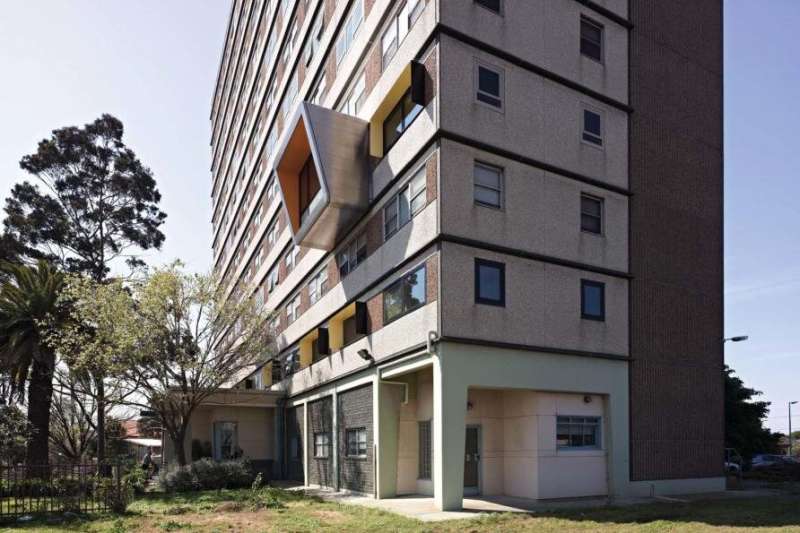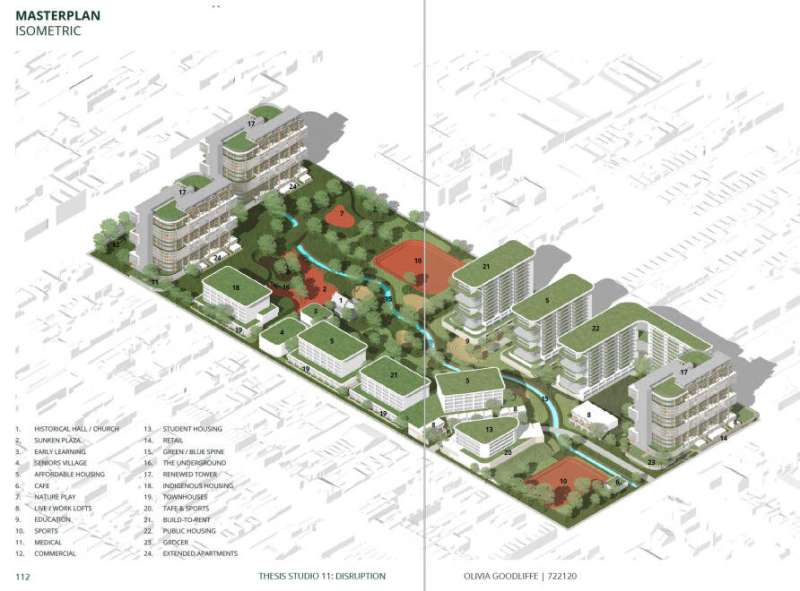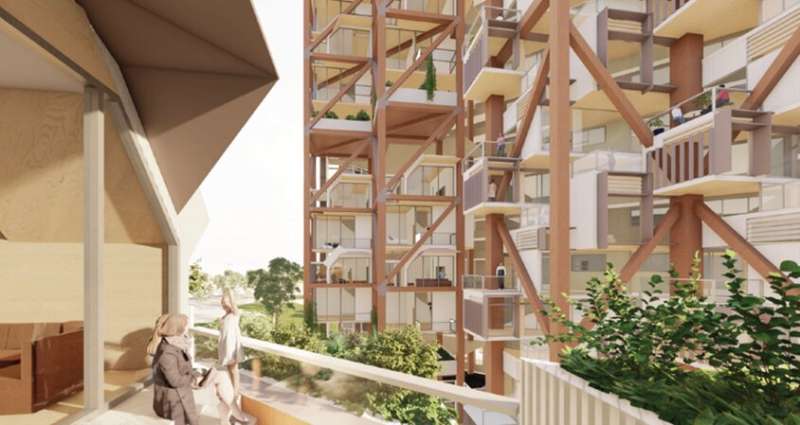This article has been reviewed according to Science X's editorial process and policies. Editors have highlighted the following attributes while ensuring the content's credibility:
fact-checked
trusted source
proofread
The future of Melbourne's public housing towers

Monolithic in scale and nature, Melbourne's 47 public housing towers have become aging assets that present great challenges to the state government of Victoria. This has been amplified by Australia's current housing affordability issues and 30 years of under investment in public and affordable housing.
These behemoths were designed in the 1950s in the internationalist modern architecture style as part of a bold public housing vision to redevelop inner slums of Melbourne.
Built throughout the 1960s, the towers have provided a backbone to Victoria's public housing system for the past 60 years.
Born in an age when state governments built public housing directly, the towers were innovative in their prefabricated design—constructed like a pack of cards from concrete panels precast in a government facility at Holmesglen.
The towers have provided accommodation for thousands of families and integrated waves of new migrants into our suburbs over the years, but it's undeniable that the monolithic design, uninsulated concrete walls and low maintenance of the buildings has led to a range of poor health and social outcomes.
The towers' poor connectivity to surrounding communities, harsh and meager communal areas, and drab pebble-crete façades now commonly stigmatize them as a symbol of our neglected public housing system.
The government has undertaken rolling foyer, hot water system and apartment interior upgrades over the years, but the towers have never been significantly upgraded over their now long life.
A 2018 Victorian parliamentary report found years of chronic under-investment.
The last public attempt to design a future for the towers was the "Tower Turnaround" competition to rejuvenate a building in Footscray in 2007.
A prototype of an innovative "pod" apartment extension designed by BKK Architects was built as an outcome of the competition, but the further retrofitting of the building or any further application of the approach did not proceed.
This year, architecture students at the Melbourne School of Design have taken up the challenge of imagining futures for Melbourne's public housing towers in their final design thesis subject.
In the meantime, the Victorian Government's Big Build strategy is taking a demolish-and-rebuild approach to updating our public housing, and the open grounds surrounding the towers are currently being filled by new medium-density public and affordable housing.

But with no coordinated process for the towers themselves, this strategy creates further equity issues by taking away the public open spaces designed to compensate the tower residents for the lack of private outdoor spaces like balconies.
With a depth of both social history and embodied energy (this is a calculation of all the energy that's used to produce a material or product) in their pre-cast concrete structures, can these aging buildings have their life extended, avoiding the need to re-house thousands of existing tenants, or is it time to pull them down?
Demolishing the towers
New housing has the potential to provide better social amenity, healthier homes and lower energy bills for residents—and the removal of the monolithic towers from our wider urban landscapes is also likely to be considered a positive move by many.
However, demolishing the towers will involve moving and re-housing thousands of residents, either temporarily while sites are developed, or permanently if the sites are redeveloped at lower densities.
This will cause a huge upheaval to the lives of the people living there—especially the elderly and infirm.
It will also cost tens of millions of dollars per tower to temporarily rehouse these people while sites are redeveloped.
Demolishing such tall buildings will be a long, complex and disruptive process which I estimate will cost additional tens of millions of dollars per site.
Environmentally, demolishing the towers will have a huge carbon emission and a range of other impacts, including the need to contain asbestos elements in the demolition and trucking huge amounts of construction waste to landfill through our suburbs.
As we move into an era of active carbon emission accounting in our buildings, the embodied energy contained in the towers' concrete structures is a public asset that we should do everything possible to extend the life of.

Extending and refurbishing the towers
While the towers are poorly insulated and difficult to alter structurally, there are options to rejuvenate them for another 60 years without needing to decant the residents—providing much greater value to our public housing system.
Interestingly, the apartments in the towers are now considered relatively large by private market standards, with views developers would drool over.
If refurbishments could update and expand the poorly designed and maintained communal areas of the towers and provide some level of private or communal outdoor space, there's no reason these apartments could not become public housing that residents could take pride in.
The towers' prefabricated construction does not allow the alteration of walls or any further weight loaded onto them.
However, the towers are designed with apartments on one side with solid or screened corridors on the other. This single-sided corridor design presents the opportunity to add new structures to the corridor sides of the towers.
These new structures could be built from the ground up, providing additional bracing to the existing towers rather than adding any load to them. Most importantly, this could be done without interfering with the apartments, and without the need for residents to move out of the towers.
Existing narrow corridors could be widened out into more generous and social communal spaces, with light wells and garden elements.
New floor areas built in and off these spaces could provide flexible communal workspaces, educational spaces, areas for service providers and even new apartments, which, if private sector, could help pay for the works.
The new areas could include outdoor spaces for residents at different levels, including on the roof, with both attractive landscaping and productive gardens.
We could also consider fully rejuvenating the tower façades by investing in private balconies or glazed winter-gardens on the other apartment façades.
While this would create more disturbance for residence, it would improve the thermal performance of the buildings and humanize the huge scale of the tower façades.
Extending and refurbishing the towers would have a much lower environmental impact than demolition. By using the embodied energy already in the concrete structures and avoiding the material use and emissions impacts of building new structures, these stalwarts of the Melbourne skyline could have a new lease of life.
As part of a research-based thesis studio, students at the Melbourne School of Design considered the futures of the towers and how they could be refurbished for a further 60 year life-span. You can see examples of their work.



















